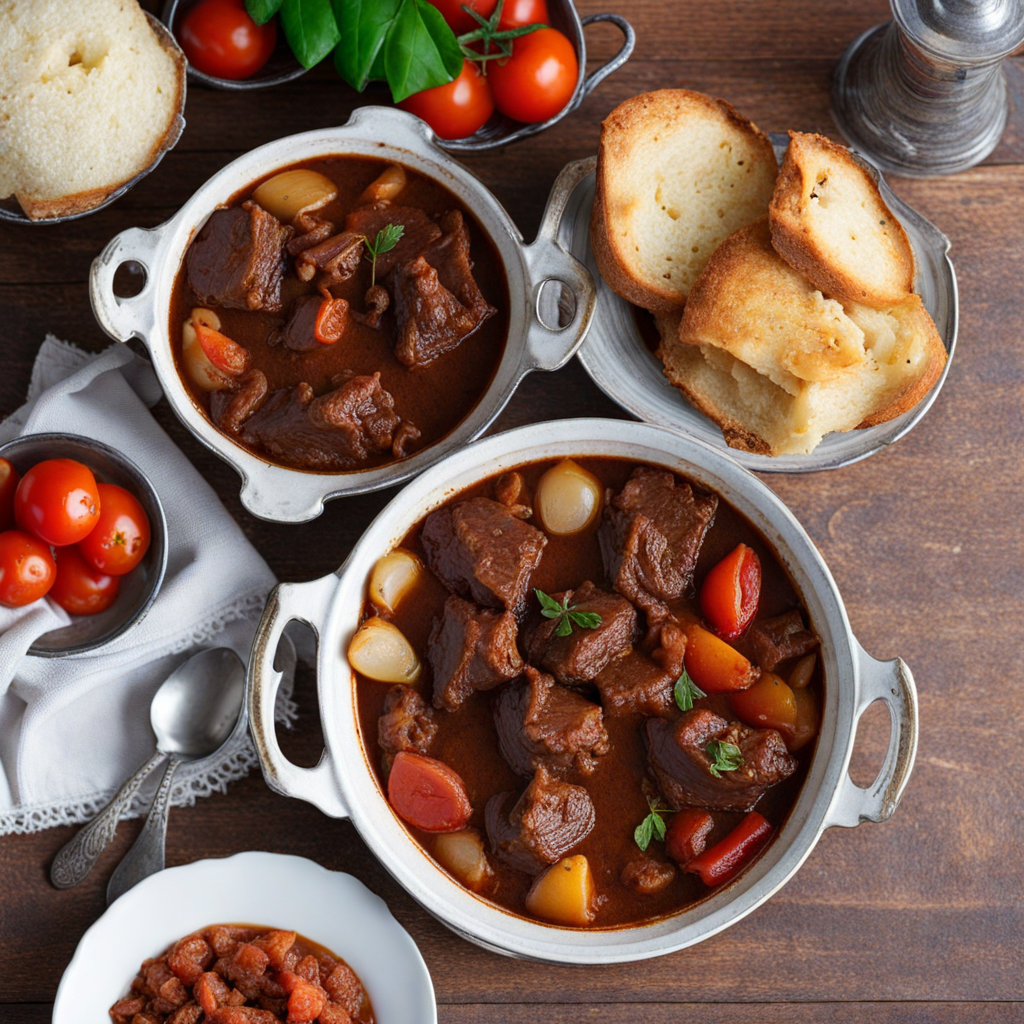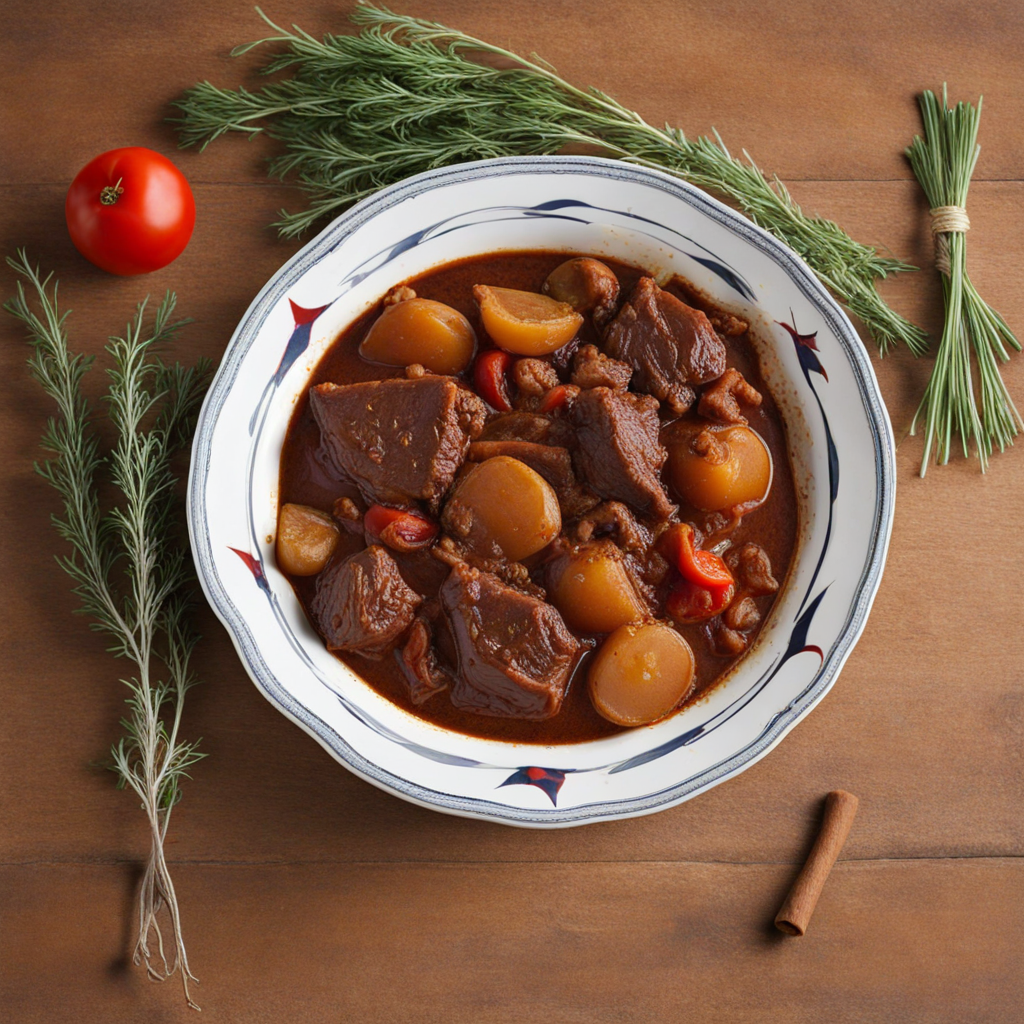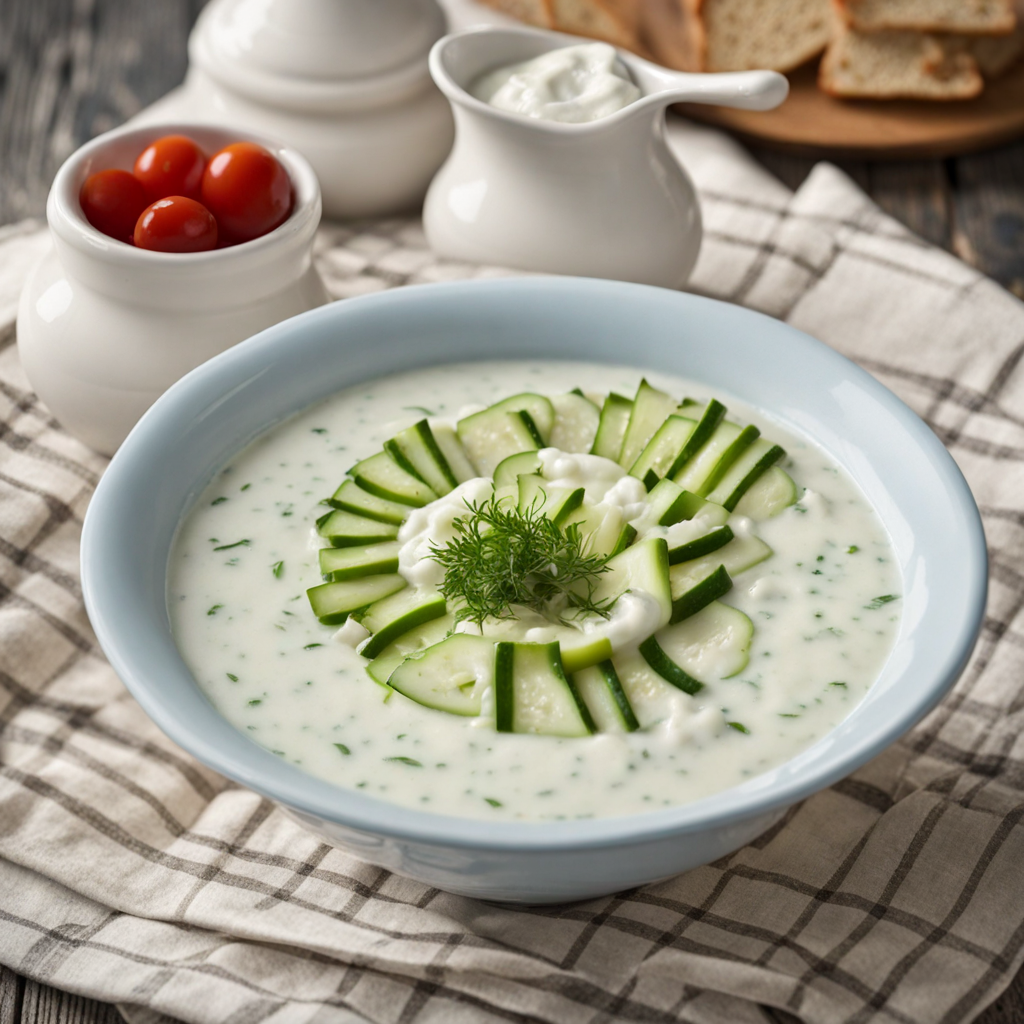Stifado
Stifado is a traditional Cypriot dish that embodies the rich and diverse culinary heritage of the island. This hearty stew is primarily made with tender pieces of meat, often beef or rabbit, which are simmered slowly to achieve a melt-in-your-mouth texture. The meat is combined with a medley of aromatic spices, including cinnamon, cloves, and allspice, which infuse the dish with a warm, inviting flavor profile. The addition of pearl onions or shallots adds a sweet and slightly tangy note, balancing the savory elements and enhancing the overall depth of the dish. One of the standout features of Stifado is its sauce, which is typically made from ripe tomatoes, red wine, and vinegar, creating a rich and complex base that clings beautifully to the meat. The slow cooking process allows the flavors to meld together, resulting in a dish that is both comforting and soul-satisfying. Served with crusty bread or alongside rice, Stifado is not just a meal; it's an experience that invites you to savor each bite, discovering the layers of flavor that make Cypriot cuisine so special. Stifado is often enjoyed in a communal setting, reflecting the Cypriot tradition of sharing food with family and friends. It is commonly prepared for special occasions and gatherings, symbolizing hospitality and warmth. As you explore this dish, you'll find that it's not just about the taste but also about the stories and memories it creates, making Stifado a delightful way to connect with the vibrant culture of Cyprus.
How It Became This Dish
The Culinary Journey of Στιφάδο: A Taste of Cyprus Origins and Historical Context Στιφάδο (Stifado) is a traditional Cypriot dish renowned for its rich flavors and tender textures. Its roots can be traced back to the Byzantine Empire, a period that marked a significant cultural and culinary exchange across the Mediterranean. The dish, primarily made with beef or rabbit, is characterized by its slow-cooking method and is flavored with a variety of spices, including cinnamon, allspice, and bay leaves, along with tomatoes and onions. The name "stifado" derives from the Greek word "stifado," which means "to stew." This etymology reflects the cooking technique fundamental to the dish. The method of stewing meat can be found in ancient culinary practices, where slow cooking was used to tenderize tougher cuts of meat and infuse them with the flavors of herbs and spices. The presence of spices like cinnamon suggests a historical inclination towards bold flavors, likely influenced by trade routes that connected Cyprus to the Middle East and beyond. Cultural Significance Stifado holds a special place in Cypriot cuisine, not just as a meal but as a symbol of the island’s rich cultural tapestry. It encapsulates the essence of Cypriot hospitality, often served during family gatherings, holidays, and festivals. The dish is more than just sustenance; it represents warmth, community, and tradition. In Cypriot culture, food is often intertwined with social rituals. Stifado is commonly prepared in large pots, making it ideal for serving multiple guests, which enhances its communal significance. It is served with a side of rice or crusty bread, allowing diners to savor the flavorful sauce. This communal aspect reflects the Mediterranean lifestyle, where meals are shared and enjoyed together, strengthening familial and social bonds. Moreover, stifado has evolved to represent the island's agricultural bounty. The use of local produce, such as onions and tomatoes, highlights the importance of seasonal ingredients in Cypriot cooking. This connection to the land reinforces a sense of identity among Cypriots, linking them to their history and heritage. Development Over Time As Cyprus has experienced various cultural and political influences throughout history, so too has stifado evolved. The dish has absorbed elements from early Hellenistic influences, through the Byzantine period, into the Ottoman era, and later, British colonial rule. Each of these periods contributed unique ingredients and cooking methods, enriching the dish's complexity. During the Ottoman period, for example, the incorporation of new spices and cooking techniques became prevalent. This period saw a flourishing of culinary traditions, and stifado adapted by incorporating spices that were previously less common in Greek cooking. The Ottomans introduced the use of dried fruits, which sometimes make their way into modern variations of stifado. The sweet and savory balance created by the addition of ingredients such as raisins or prunes reflects this historical culinary exchange. The British colonial era brought about further changes, particularly in terms of ingredient availability and culinary influences. The British introduced various meats and spices that became staples in local cuisine. However, Cypriots resisted many colonial influences, maintaining their culinary identity while adopting only what suited their tastes. Stifado remained firmly rooted in Cypriot tradition, a testament to the resilience of local culinary practices. In modern times, stifado has found its way onto international menus, particularly in Greek and Mediterranean restaurants around the world. This globalization of cuisine has led to variations of the dish, with some chefs experimenting with different meats, such as chicken or even vegetarian adaptations using mushrooms or eggplant. Despite these variations, the essence of stifado—slow-cooked, spiced meat in a rich sauce—remains intact, showcasing the dish’s adaptability and enduring appeal. Modern Interpretations and Global Presence In recent years, there has been a resurgence of interest in traditional and authentic foods, leading to a revival of stifado in both Cyprus and the diaspora. Chefs are increasingly focusing on farm-to-table concepts, sourcing local ingredients to prepare traditional dishes with a contemporary twist. This movement has prompted a resurgence of cooking classes and culinary workshops dedicated to Cypriot cuisine, where stifado is often a centerpiece. The globalization of food culture has also led to a greater appreciation for stifado among non-Cypriots. As people become more adventurous diners, seeking authentic ethnic experiences, dishes like stifado gain recognition beyond their geographic origins. Food festivals celebrating Mediterranean cuisine often feature stifado, showcasing its rich flavors and inviting a new generation to experience its culinary heritage. Conclusion Stifado is not merely a dish; it is a narrative woven into the fabric of Cypriot culture—one that reflects historical influences, regional identity, and communal spirit. From its ancient origins to its modern adaptations, stifado embodies the resilience of Cypriot culinary traditions. As it continues to evolve, this savory stew remains a cherished symbol of Cyprus, inviting both locals and visitors to partake in its rich history and flavors. In a world where culinary traditions are often diluted, stifado stands as a robust reminder of the importance of heritage in shaping our dining experiences. As we savor each bite, we are not just enjoying a meal; we are partaking in a rich cultural legacy that has endured through centuries—a testament to the island of Cyprus and its storied past.
You may like
Discover local flavors from Cyprus







